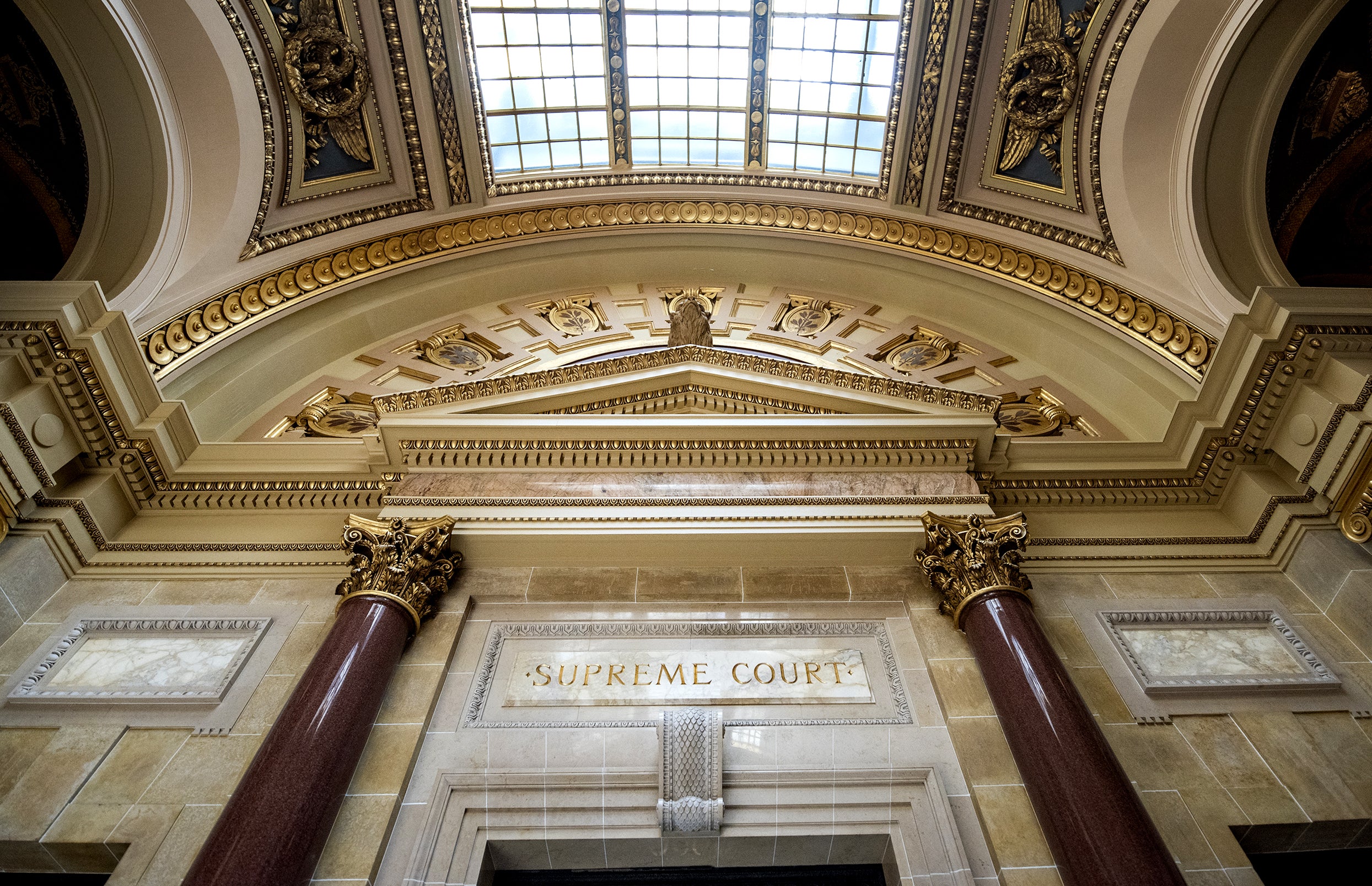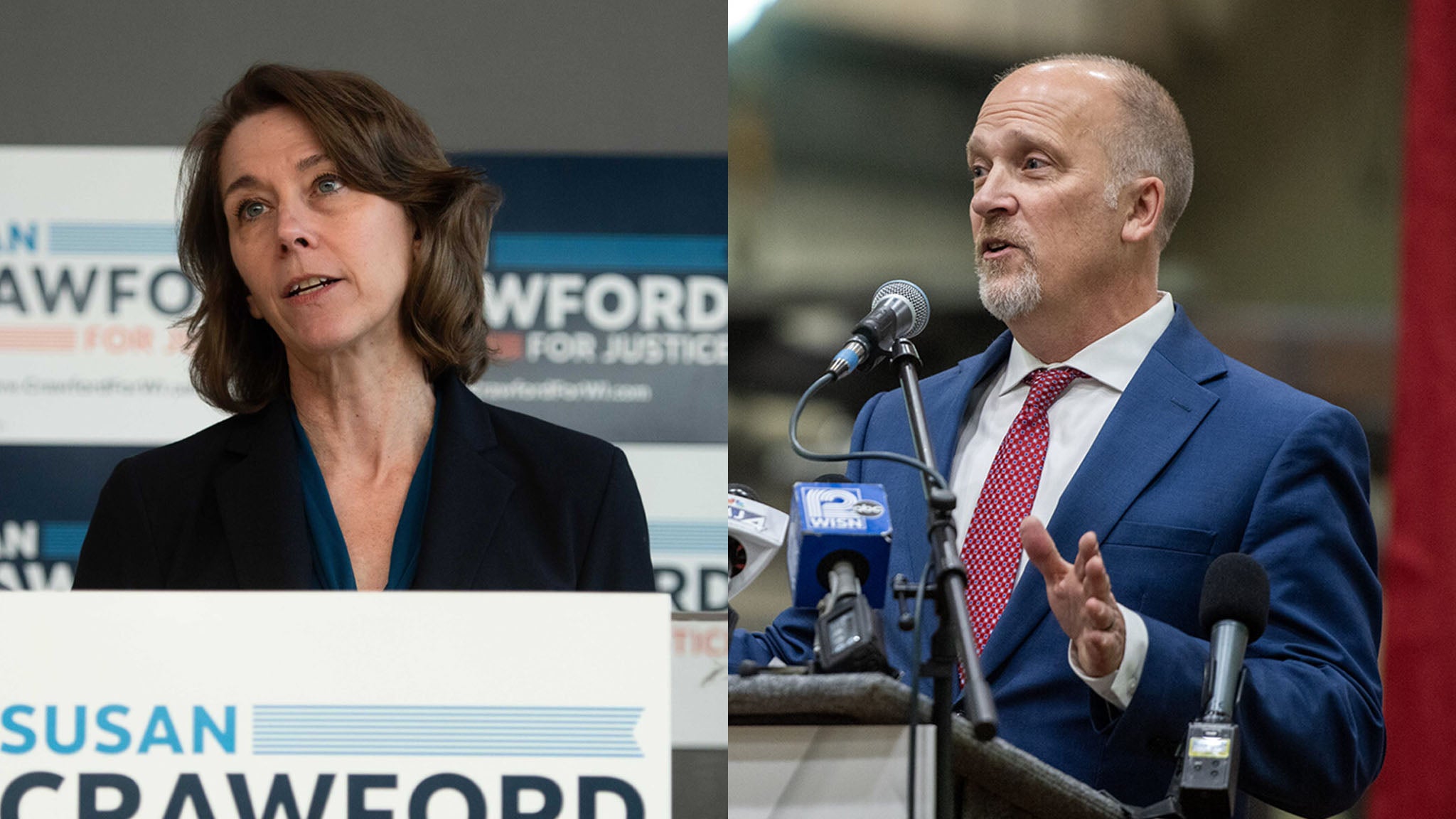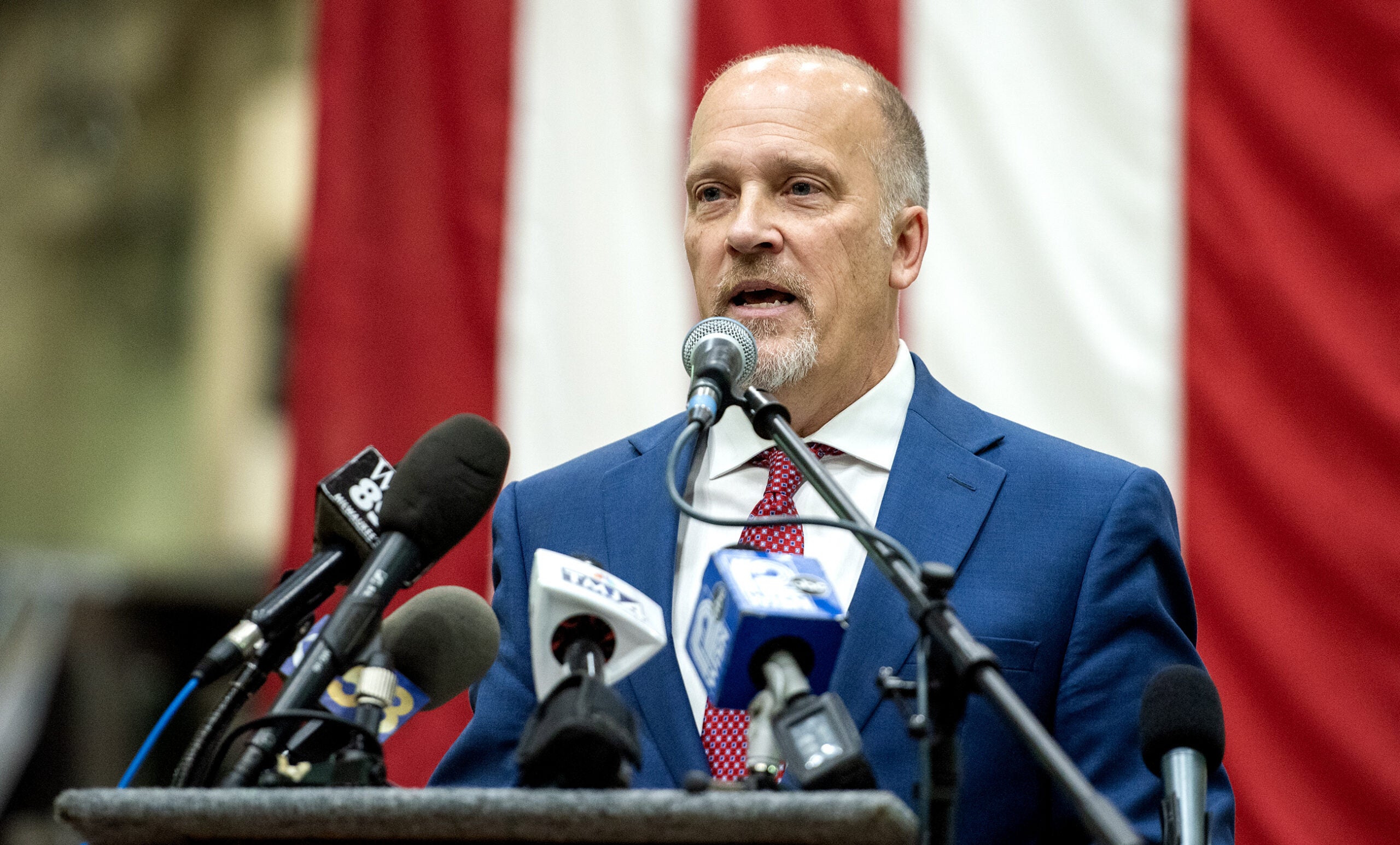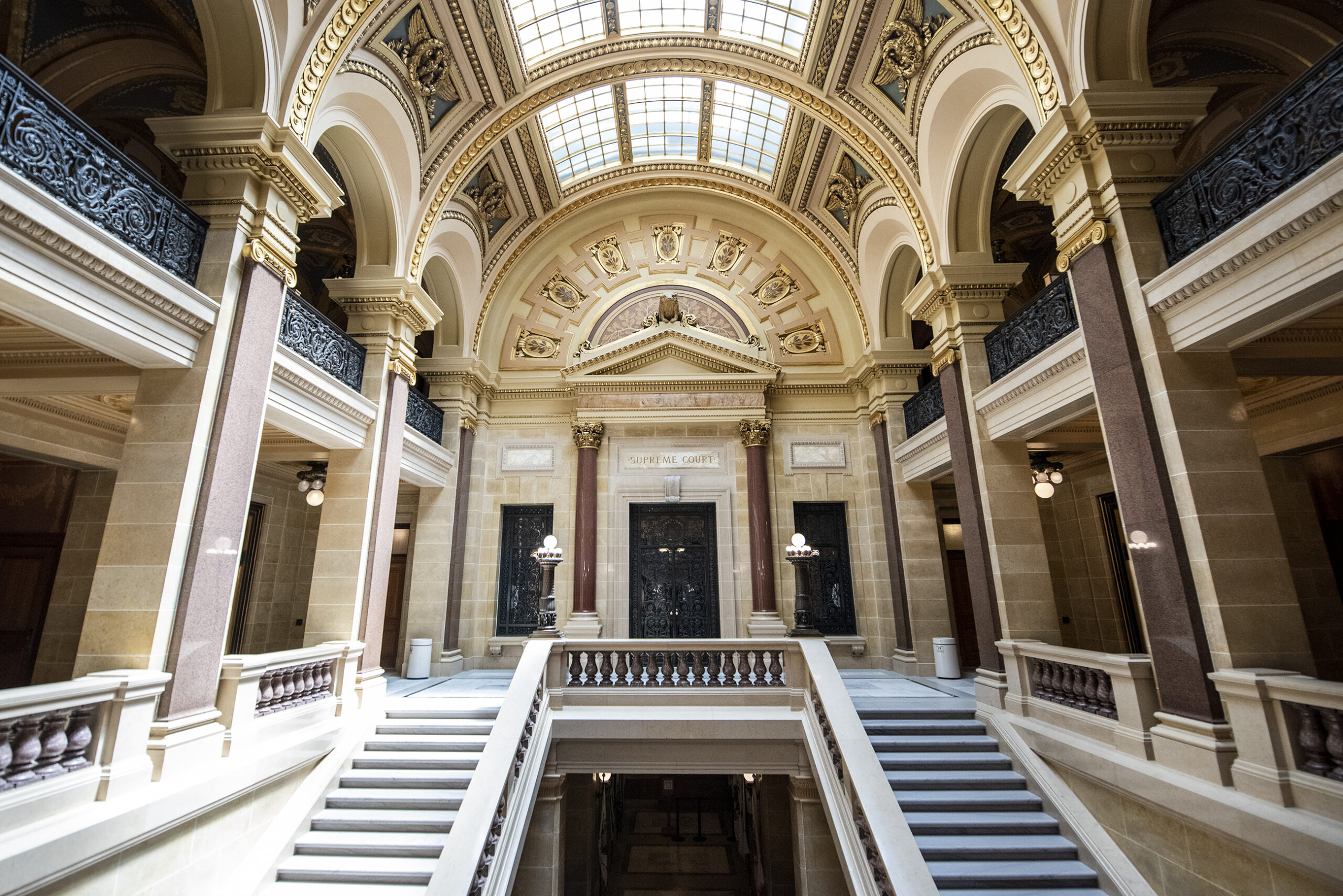Wisconsin’s Supreme Court race broke turnout records in Tuesday’s primary. With some analysts expecting tens of millions of dollars in campaign ads before the April election, it’s expected to shatter spending records, too.
“We are in a new era for state Supreme Court elections,” said Douglas Keith, an attorney with the Brennan Center for Justice who tracks spending on judicial races nationwide. “These races have never gotten this level of attention.”
In the leadup to the primary, candidates and outside groups spent millions of dollars on ads. At the night’s end, two candidates emerged victorious in the officially nonpartisan race: Milwaukee County Circuit Court Judge Janet Protasiewicz, who is backed by Democrats, and former Wisconsin Supreme Court Justice Daniel Kelly, who’s backed by Republicans.
Stay informed on the latest news
Sign up for WPR’s email newsletter.
They’ll now go head-to-head in the April 4 general election, which will decide the ideological bent of the court for years to come.
With the stakes so high, the race is on track to break the last record for spending in a Wisconsin Supreme Court race, set in 2020.
And it could break national records, too. According to Brennan Center data, the most expensive race for a single seat, not adjusted for inflation, was a $15.2 million race in Illinois in 2004. In 2015, groups spent a total of $21.4 million on a race for three seats in Pennsylvania.
That’s a sign of how consequential this election is, both inside and outside of Wisconsin. The court has the potential to decide on cases that will shape the state’s abortion law, legislative maps and voting policies for years ahead.
“The stakes in this moment seem to be bigger because of that growing recognition of how important these courts are, and the high profile issues that it’s clear this court is going to decide, from elections to abortion access,” Keith said.
Millions spent already in the primary
Tracking campaign spending is an imperfect science — sources differ on how much money has been raised and spent to date.
One way to measure spending is by tallying up ad buys. The Brennan Center has found almost $7 million in ad spending, and that number may have even topped $9 million, according to the firm AdImpact Politics. That firm found that more than half of that money was spent on ads supporting Kelly or ones attacking his fellow conservative opponent, Waukesha County Circuit Court Judge Jennifer Dorow. About $3.5 million was spent boosting the liberal candidates, the group found.
Two groups spent the most. Fair Courts America, a conservative group backed by GOP megadonor Richard Uihlein, spent a reported $2.4 million, according to the Brennan Center, largely backing Kelly. The liberal group A Better Wisconsin Together spent $1.8 million – much of it on ads attacking Dorow, according to the Wisconsin Democracy Campaign, a campaign finance watchdog group.
The candidates themselves fundraised, with Protasiewicz far outpacing her rivals. In the final days of the primary campaign, her team reported raising nearly $2.2 million — more than the other three candidates combined.
By comparison, Kelly’s primary campaign raised about $470,000. Dorow, who came in third place behind Kelly, raised about $760,000. Dane County Circuit Judge Everett Mitchell, a liberal-backed judge who finished in a distant fourth place, also fundraised the lowest amount, bringing in about $223,000.
Other groups contributing large sums include the Wisconsin Manufacturers & Commerce, the state’s largest business lobby, which paid for anti-Protasiewicz advertising, and Conservative Action for America and Justice for Wisconsin, two pro-Dorow groups.
Going into the general election, groups that declined to endorse in the primary are expected to throw their weight behind candidates. There are also early signs that the state’s political parties will get more involved. Currently, the Democratic Party of Wisconsin has the fundraising edge, having raised $3.5 million in the first five weeks of the year compared to $56,000 for the Republican Party of Wisconsin.
High-profile issues shine a bright light on state courts
All of these record-breaking numbers are a sign of increasing interest in high courts generally, and in the Wisconsin Supreme Court specifically going into the 2024 election, said Keith, the Brennan Center attorney.
“The spending is increasing with the recognition that these courts are going to be the courts that are deciding some of the highest-profile, most politically charged legal questions,” he said. “Those decisions bring a higher profile to these courts. And the higher profile brings all this new money and this new attention.”
For Wisconsin voters, major issues at play are the state’s abortion ban and the shape of the legislative maps. If Protasiewicz wins, a lawsuit challenging the existing maps, which favor Republicans, is likely to go before the high court.
More broadly, Wisconsin is a key swing state where presidential races have recently been decided by the slimmest of margins. In 2020, the state Supreme Court decided several cases about whether to throw out the state’s electoral college results in the Biden-Trump presidential race. The ideological makeup of the state court could play a role in future election disputes.
Political scientists have long debated how important campaign funding actually is in determining an outcome. Historically speaking, the public has paid less attention to state Supreme Court races, which has amplified the role of campaign spending.
These races are “a fairly inexpensive investment for an election that is really important,” said Keith. “The groups have been able to be, fairly easily, the dominant spender in a particular election that they’re interested in, because these races haven’t tended to get that much attention.”
One thing that is clear: turnout for Tuesday’s primary broke records for a spring Supreme Court primary. Unofficial results from the Associated Press indicate that more than 960,000 votes were cast, comprising about 20.5 percent of the state’s estimated voting-age population. The previous record of 16 percent was set in 2020.
With so much money pouring into the state for the next six weeks, turnout numbers are also expected to climb.
Wisconsin Public Radio, © Copyright 2025, Board of Regents of the University of Wisconsin System and Wisconsin Educational Communications Board.






